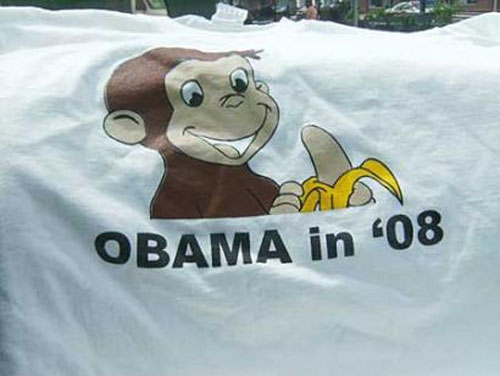Emma B. sent in an image of this wonderful toy:
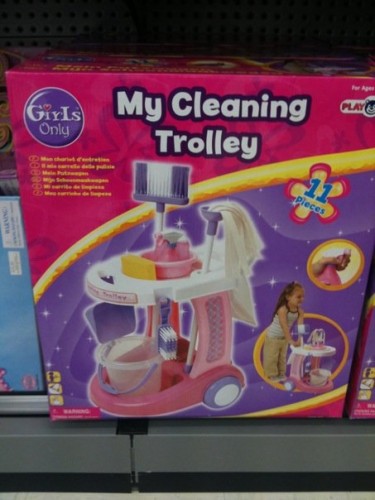
As Emma pointed out, commenters on digg seemed to mostly interpret it as a hotel housekeeper’s trolley, though the website referred to cleaning the house.
There is nothing inherently wrong with toys that allow kids to mimic doing household tasks. Kids like to play at doing what they see adults doing–in fact, it’s an essential part of development. I had a toy grocery cart as a kid and thought it was awesome, particularly when I forced my cat to ride in it (he was very patient).
What annoys me is the way these products are so clearly gendered–in this case, blatantly so (“girls only“). Girls learn that playing at household chores is fun fun fun:
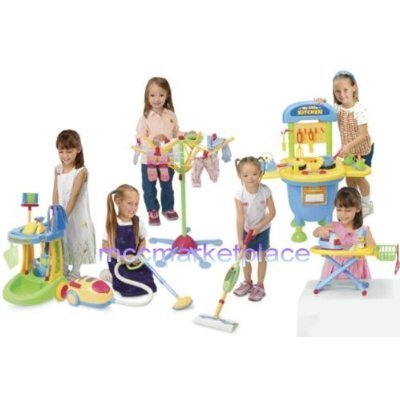
To my surprise, though, I found one site that showed a boy playing with the cleaning trolley:

I don’t think I’ve ever before seen a cleaning toy with a boy pictured playing with it. And that’s awesome. Though for reasons that are not clear to me, this site listed the trolley at $158, while it was $35-45 at all the other websites.
So I was able to find one example of a boy playing with a housework toy, but the overall marketing message was still clearly that housework is fun for girls…only.
NEW (Dec. ’09)! Lynne S. sent in these photos of housework toys at Toys ‘R Us that include both girls and boys playing:
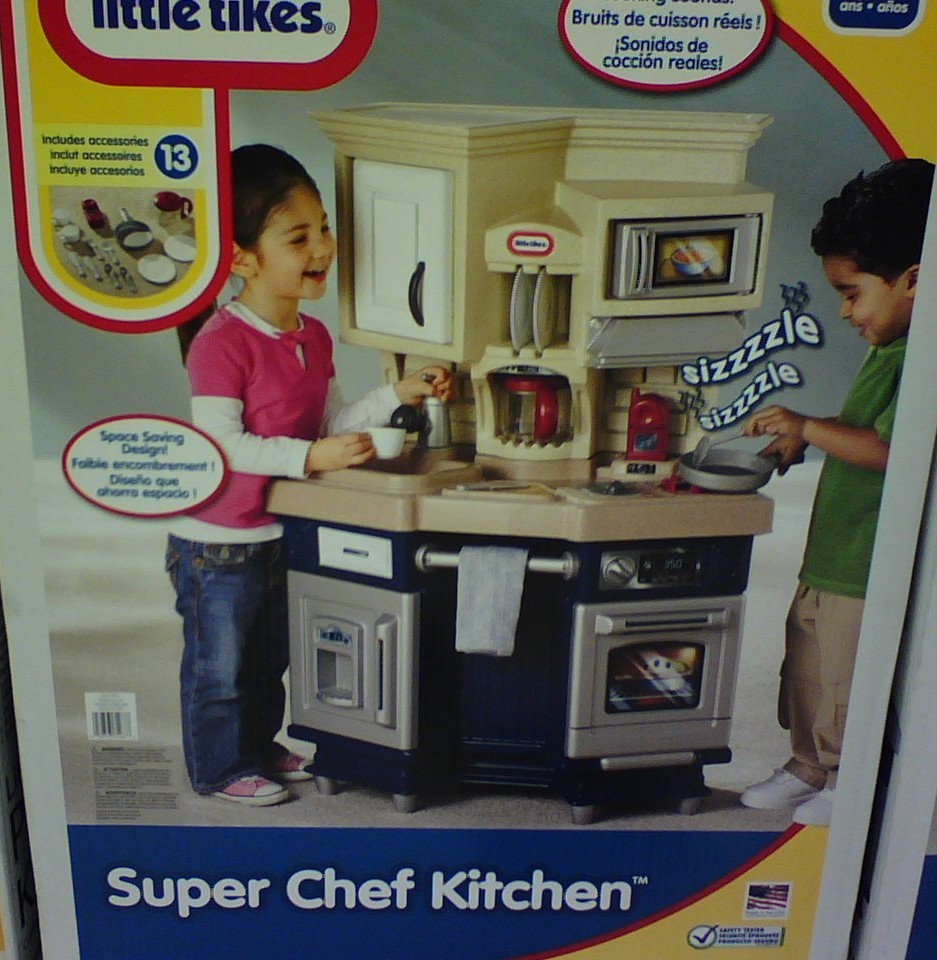
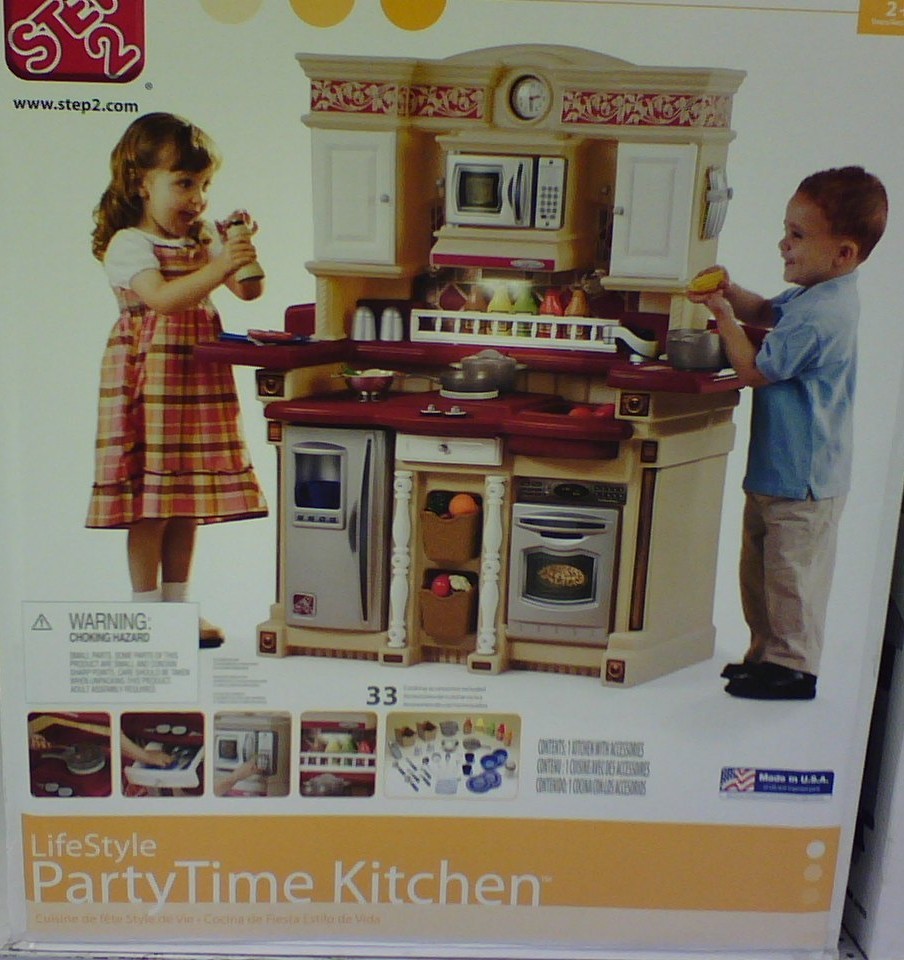
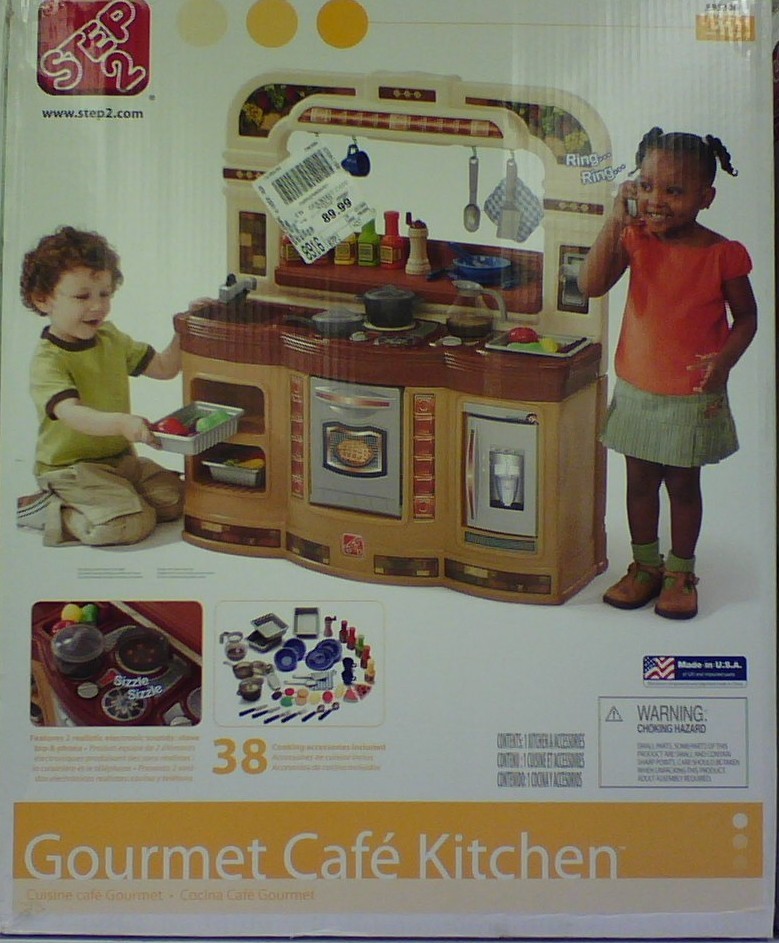
ALSO NEW (Dec. ’09)! Fia K. found some examples too:
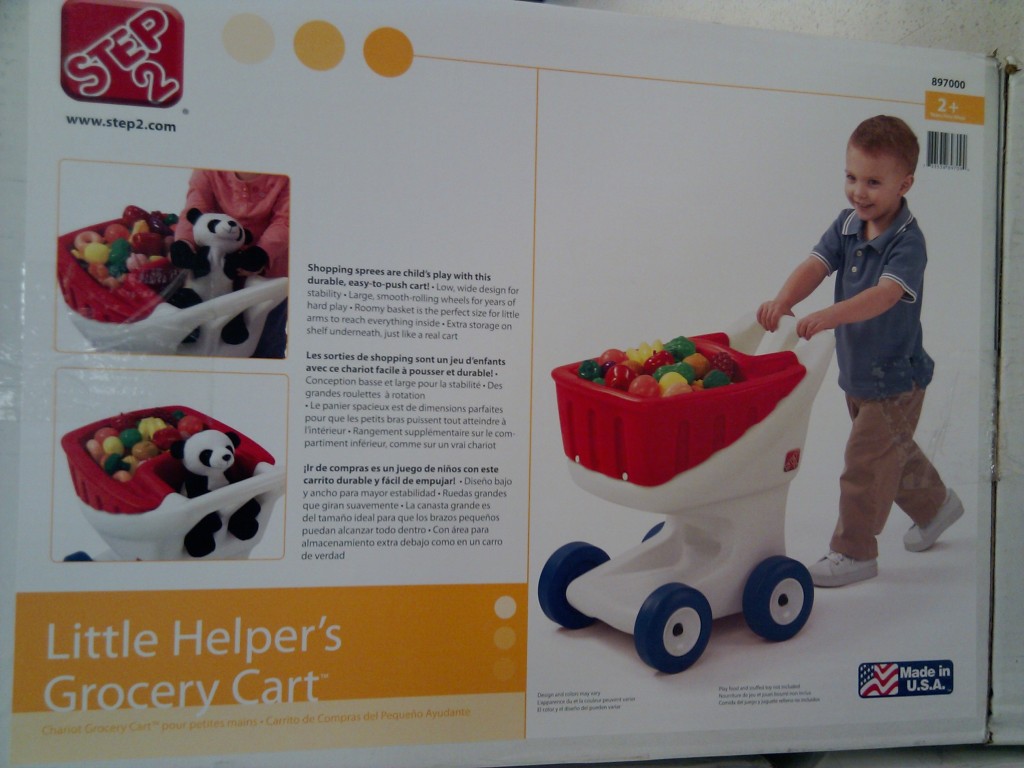
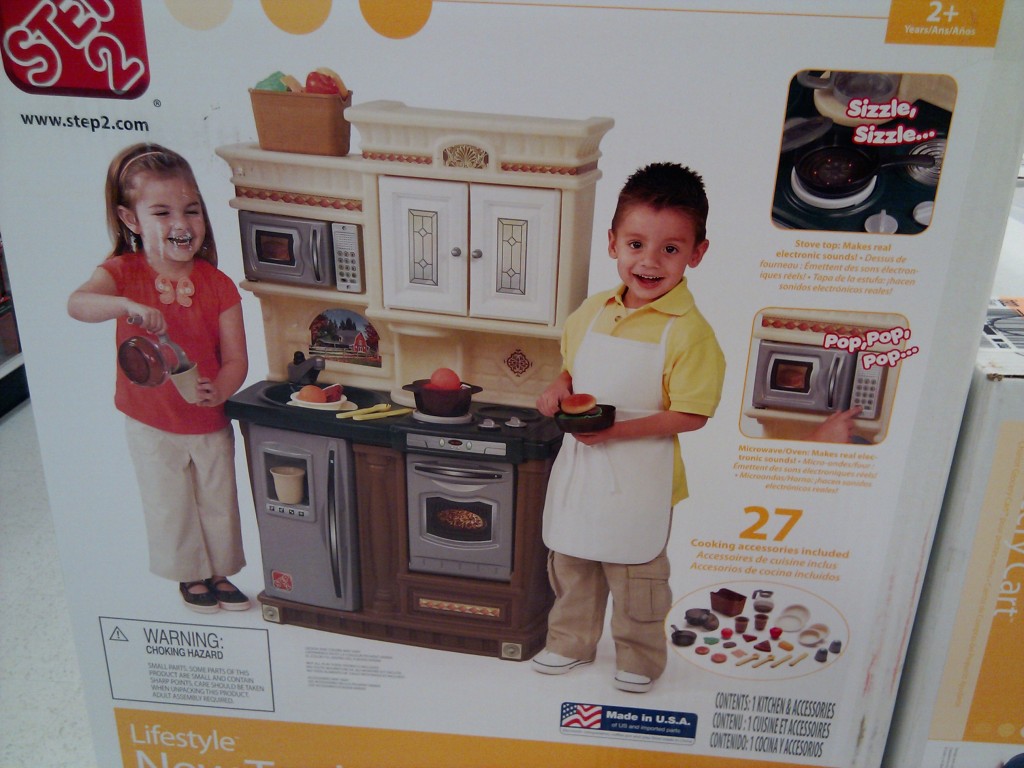
See also this post featuring screen shots from a site that advertises masculine toys primarily with girls.
But see these posts on the Rose Petal Cottage, rigidly gendered Sears and Amazon catalogs, and Mom/Daughter domesticity by Nintendo.







